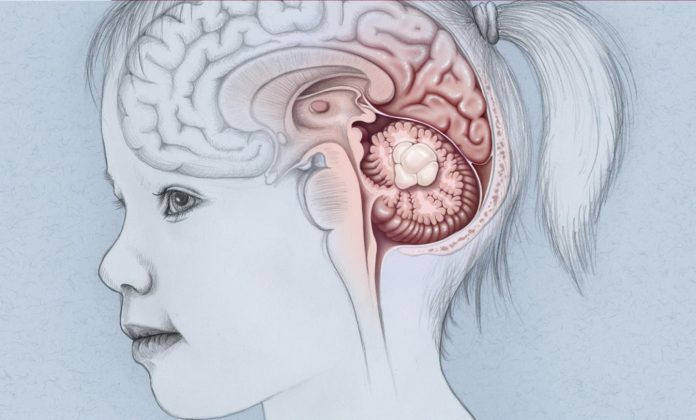Medulloblastoma is a central nervous system tumor that is fast-growing and often spreads to other parts of the brain and spinal cord. This tumor mainly affects children but can occur in both children and adults. Surgery is usually the first step in treating medulloblastoma and other treatments include radiation therapy and chemotherapy. If the disease does not spread, survival rates are around 70–80%. If the disease has spread, the survival rate is about 60%.
New preclinical research in human tissue samples, human cell lines, and mice demonstrates a new strategy to starving tumor cells of energy to prevent further growth. The new research could potentially lead to changes in how some patients with medulloblastoma are treated in the future if the findings are confirmed in human clinical trials.
The research study is published in Nature Communications in a paper titled, “Inositol treatment inhibits medulloblastoma through suppression of epigenetic-driven metabolic adaptation,” and led by scientists from the Queen Mary University of London and funded by the charity Brain Tumor Research.
“Deregulation of chromatin modifiers plays an essential role in the pathogenesis of medulloblastoma, the most common pediatric malignant brain tumor,” wrote the researchers. “Here, we identify a BMI1-dependent sensitivity to deregulation of inositol metabolism in a proportion of medulloblastoma.”
The scientists turned to inositol hexaphosphate (IP6), a naturally occurring compound present in plants and animals. They demonstrated how it inhibits medulloblastoma and can be combined with chemotherapy to kill tumor cells.
“Medulloblastoma occurs in four distinct subgroups (WNT, SHH, G3, and G4),” explained Silvia Marino, PhD, director of the Brain Tumor Research Centre of Excellence at Queen Mary University of London and lead researcher. “Despite our growing knowledge of the molecular differences between these subgroups, current options are surgery together with radiotherapy and/or chemotherapy for all patients. We desperately need to understand the key molecular events driving tumor growth in each subgroup to design new, less toxic, targeted treatments.”
“G4 medulloblastoma is the least understood of all subgroups, despite being the most common and associated with poor prognosis. We have identified a novel way that this type of medulloblastoma is able to adapt its metabolism and grow uncontrollably. Significantly, we have also shown how this energy supply can be blocked. These exciting results bring hope of developing new targeted treatments for patients with this aggressive pediatric brain tumor.”
Epigenetic changes can contribute to the development of medulloblastoma. A protein involved in this process, known as BMI1, is found in high levels in a broad range of cancers including brain tumors. In medulloblastoma, high levels of it are found in the G4 subgroup, where it sustains tumor growth.
The scientists have previously shown that high levels of BMI1 are found in G4 medulloblastoma cells, but these cells also lack a protein called CHD7. The current study reveals that high levels of BMI1 enable the cancer cells to adapt their metabolism and grow at a rapid rate.
To block this supply of energy to metabolize and grow rapidly, researchers treated the cells with inositol hexaphosphate (IP6). The team also demonstrated IP6 combined with chemotherapy, had an increased ability to kill the tumor cells in mice.
“It is great news and brings some much-needed hope for the future,” stated Hugh Adams, head of stakeholder relations at Brain Tumor Research. “There is still some way to go but we hope that a clinical trial could be up and running in the near future. Brain tumors kill more children and adults under the age of 40 yet, historically, just 1% of the national cancer spend has been allocated to this devastating disease. Brain Tumor Research is determined to change this.”






